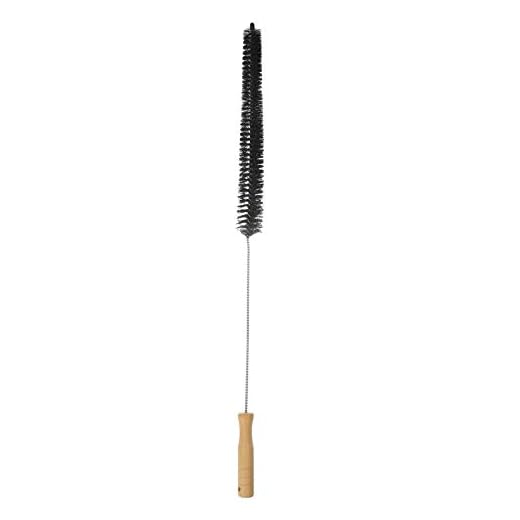How to Clean Dryer Vent from Outside Using a Drill

Keeping your dryer vent clean is essential not only for the efficient performance of your dryer but also for your safety. A clogged dryer vent can lead to longer drying times, higher energy bills, and even the risk of a fire. While cleaning the dryer vent from the inside is a common practice, it’s also important to clean it from the outside to ensure maximum efficiency.
One effective way to clean your dryer vent from the outside is by using a drill. By attaching a vent cleaning brush to the drill, you can easily remove any lint or debris that may have accumulated in the vent. This method is quick, efficient, and can be done without the need for professional help.
Before you begin, make sure to disconnect the dryer from the power source and remove any lint trap or filter. Start by locating the vent exit outside your home. It is usually located on the side or back of the house and can be identified by a metal flap or grill. Once you have located the vent, insert the cleaning brush into the vent opening and attach it to the drill.
Turn on the drill at a low speed and slowly insert the brush into the vent. Gently push the brush in and out while rotating it to remove any lint or debris. Be careful not to use too much force as it may damage the vent. Continue cleaning until the brush comes out of the vent clean, indicating that the vent is free from any obstructions.
After you have cleaned the vent, reattach the lint trap or filter and reconnect the dryer to the power source. It’s recommended to clean your dryer vent at least once a year to keep it functioning properly. By following these simple steps and using a drill, you can easily clean your dryer vent from the outside and ensure the safety and efficiency of your dryer.
What is a Dryer Vent and Why is it Important?
A dryer vent is a duct or pipe that is connected to the back of a clothes dryer and exhausts warm, moist air and lint to the outside of a building. It is an essential component of a dryer system and plays a crucial role in maintaining the efficiency and safety of the dryer.
Importance of a Dryer Vent
Avoiding Fire Hazards: One of the primary reasons why a dryer vent is important is to prevent the risk of fire. When clothes are dried in a dryer, lint is produced. If the dryer vent is clogged or blocked, the lint can accumulate and restrict the airflow. This can lead to overheating and potentially cause a fire.
Ensuring Proper Airflow: A blocked or clogged dryer vent can also impede the proper airflow required for the dryer to function efficiently. When the vent is obstructed, the moist air and lint cannot be expelled properly, resulting in longer drying times and decreased energy efficiency.
Preventing Mold and Mildew: Another important function of a dryer vent is to remove the damp air from the dryer. If the vent is obstructed, the moisture can accumulate in the dryer and lead to the growth of mold and mildew. This not only damages the dryer but can also pose health risks to the residents.
Extending Dryer Lifespan: A clear and clean dryer vent allows for unrestricted airflow, which reduces the strain on the dryer’s components. This helps in extending the lifespan of the dryer and minimizing the need for frequent repairs or replacements.
Maintaining a Dryer Vent
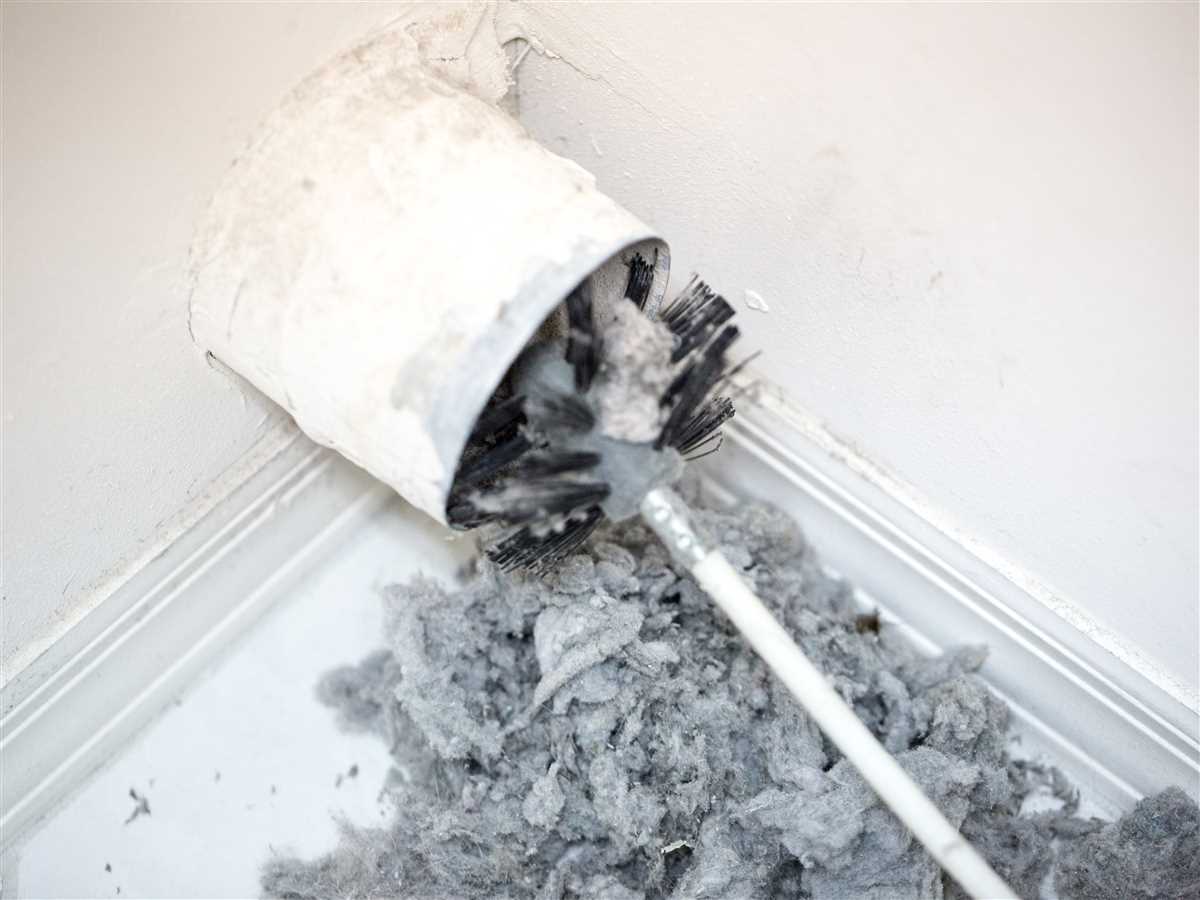
Regular maintenance of a dryer vent is essential to ensure its efficiency and safety. This includes:
- Cleaning the Vent: Remove lint and debris from the dryer vent regularly to prevent clogs. This can be done using a dryer vent cleaning kit or by hiring a professional vent cleaning service.
- Checking for Blockages: Inspect the vent regularly for any obstructions or blockages that may impede the airflow. This can be done by visually examining the vent opening or using a vent cap with a removable cover.
- Ensuring Proper Installation: Make sure that the dryer vent is installed correctly and is not crimped or kinked. A properly installed vent allows for smooth airflow.
- Using Short Vent Runs: Minimize the length of the dryer vent run and eliminate unnecessary twists and turns. A shorter vent run allows for better airflow and reduces the chances of clogs.
By understanding the importance of a dryer vent and taking necessary precautions to maintain it, you can ensure the safety, efficiency, and longevity of your dryer.
The Dangers of a Clogged Dryer Vent
A clogged dryer vent may seem like a minor inconvenience, but it can actually pose serious risks to your home and your family’s safety. Ignoring the maintenance of your dryer vent can lead to a variety of issues that can have devastating consequences.
1. Fire Hazard
One of the most significant dangers of a clogged dryer vent is the increased risk of a fire. When lint, debris, and other materials accumulate in the dryer vent, they can obstruct the airflow. As a result, the dryer generates excessive heat, which can cause the lint to ignite. According to the U.S. Fire Administration, clogged dryer vents are responsible for thousands of house fires every year.
2. Reduced Efficiency
A clogged dryer vent can also reduce the efficiency of your dryer. When airflow is restricted, the drying process takes longer, and your clothes may not dry completely. This means you may need to run your dryer for longer periods, resulting in increased energy consumption and higher utility bills.
3. Increased Wear and Tear
A clogged dryer vent puts extra strain on your dryer, leading to increased wear and tear. The excessive heat generated by the blocked airflow can damage the heating element, thermostat, and other components of your dryer, ultimately shortening its lifespan. Regularly cleaning your dryer vent can help prolong the life of your appliance.
4. Carbon Monoxide Poisoning
In gas dryers, a clogged vent can cause carbon monoxide to leak into your home. Carbon monoxide is a colorless, odorless gas that is highly toxic and can be fatal if inhaled in high concentrations. Proper venting is crucial to ensure the safe operation of gas dryers and prevent the risk of carbon monoxide poisoning.
5. Mold and Mildew Growth
A clogged dryer vent can create a damp environment inside the vent system, which is an ideal breeding ground for mold and mildew. These fungi can pose health risks, especially for individuals with respiratory conditions or allergies. Mold and mildew growth can also spread to other parts of your home, causing further damage and health hazards.
Regularly cleaning and maintaining your dryer vent is essential to prevent these dangers. It is recommended to clean your dryer vent at least once a year or more often if you notice any signs of blockage or reduced efficiency. Hiring a professional or using a drill-powered vent cleaning kit can ensure a thorough cleaning and minimize the risks associated with a clogged dryer vent.
Signs that Your Dryer Vent Needs Cleaning
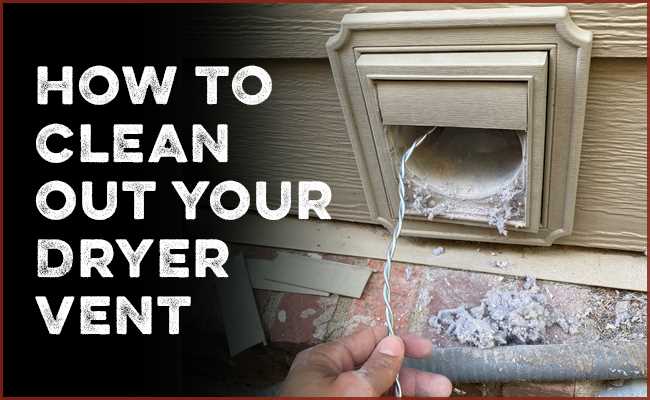
In order to maintain the efficiency and safety of your dryer, it is important to regularly clean out the vent. Here are some signs that indicate your dryer vent needs cleaning:
1. Clothes Take Longer to Dry
If you notice that your clothes are taking longer than usual to dry, it may be a sign that the dryer vent is clogged. A clogged vent restricts the airflow, causing the drying process to take longer and resulting in damp or hot clothes after a full cycle.
2. Excessive Lint Build-up
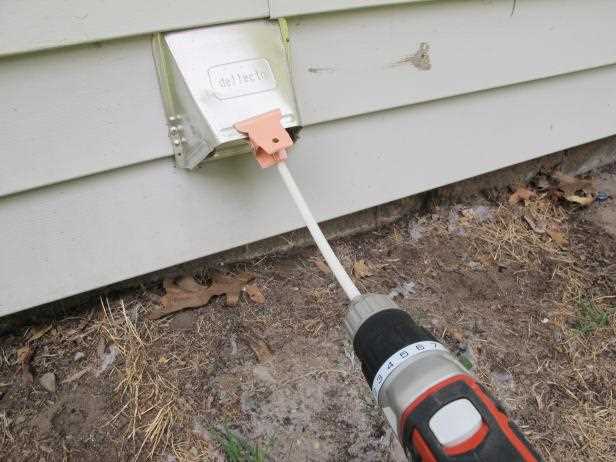
If you find excessive lint build-up on the lint trap or around the dryer, it is an indication that the vent is not properly ventilating. Lint accumulation is a fire hazard and can easily ignite, posing a serious risk to your home. Regular cleaning of the vent can help prevent this danger.
3. Burning Smell
If you notice a burning smell coming from your dryer, it is crucial to investigate the issue immediately. A clogged dryer vent can cause the machine to overheat, leading to a potential fire hazard. Cleaning the vent can help resolve this problem and ensure the safe operation of your dryer.
4. Increased Energy Bills
A clogged dryer vent can cause your dryer to work harder and longer to dry your clothes, resulting in increased energy consumption. If you notice a sudden increase in your energy bills without any other explanation, it is worth checking and cleaning the vent to improve the efficiency of your dryer.
5. Dryer Gets Hot to the Touch
If your dryer becomes excessively hot to the touch, it may be an indication of a clogged vent. A blocked vent restricts the airflow, causing the dryer to overheat. This can lead to damage to the machine and increase the risk of a fire. Regular cleaning of the vent can help prevent overheating issues.
6. Dryer Shuts Off Before Completing a Cycle
A clogged vent can cause the dryer to shut off unexpectedly before completing a full drying cycle. This happens when the built-in safety feature detects that the machine is overheating due to insufficient airflow. Cleaning the vent can help prevent this issue and ensure the smooth operation of your dryer.
7. Excessive Moisture in the Laundry Room
If you notice excessive moisture or humidity in your laundry room, it may be a sign of a clogged vent. A clogged vent prevents the moist air from being properly expelled, leading to moisture accumulation in the room. This can cause mold and mildew growth, unpleasant odors, and potential damage to your home.
Regularly cleaning your dryer vent is essential for both the efficiency and safety of your dryer. If you notice any of these signs, it is recommended to clean the vent as soon as possible to prevent further issues and potential hazards.
Tools Required for Cleaning a Dryer Vent
- A drill with a long, flexible brush attachment
- A vacuum cleaner with hose attachment
- A screwdriver
- A ladder or stool (if necessary to reach the outside vent)
- Gloves and safety glasses
- A rag or towel
- A bucket or bag for collecting lint
These tools are essential for cleaning a dryer vent from the outside using a drill. They will help you effectively remove lint and debris, ensuring that your dryer works efficiently and reducing the risk of a potentially dangerous dryer vent fire.
Before you begin the cleaning process, it’s important to gather all the necessary tools and ensure that they are in good working condition. Safety should also be a priority, so make sure to wear gloves and safety glasses to protect yourself from any potential hazards.
Having a drill with a long, flexible brush attachment is crucial for reaching deep into the dryer vent and dislodging any accumulated lint and debris. The brush attachment should have bristles that are stiff enough to effectively remove the lint, but flexible enough to navigate the twists and turns of the vent.
A vacuum cleaner with a hose attachment will come in handy for sucking up the loosened lint and debris. It’s important to use a vacuum cleaner that has sufficient suction power to effectively collect the lint, as well as a hose attachment that can reach into the dryer vent.
A screwdriver may be required to remove any screws or fasteners that are holding the vent cover in place. Make sure to use the appropriate size and type of screwdriver for the job.
If the outside vent is located at a height that is difficult to reach, you may need to use a ladder or stool to safely access it. Make sure the ladder or stool is stable and secure before climbing on it.
Having a rag or towel nearby will be useful for wiping off any dirt or debris that may come loose during the cleaning process. This will help prevent the dirt from spreading to other surfaces.
Finally, it’s a good idea to have a bucket or bag on hand for collecting the lint and debris that you remove from the dryer vent. This will make it easier to dispose of the collected lint properly.
Steps to Clean a Dryer Vent from Outside Using a Drill
1. Gather the necessary tools
Before you start, make sure you have all the necessary tools:
- Drill
- Drill brush attachment
- Extension rod or flexible dryer vent brush
- Safety goggles
- Work gloves
- Vacuum cleaner with brush attachment
- Duct tape
2. Disconnect the dryer from power
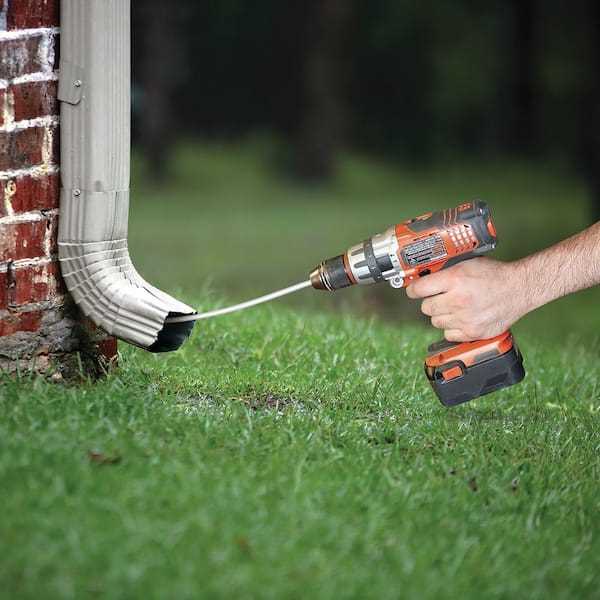
For safety reasons, it is important to disconnect the dryer from the power source before starting the cleaning process. Unplug the dryer from the outlet or turn off the circuit breaker.
3. Locate the vent opening
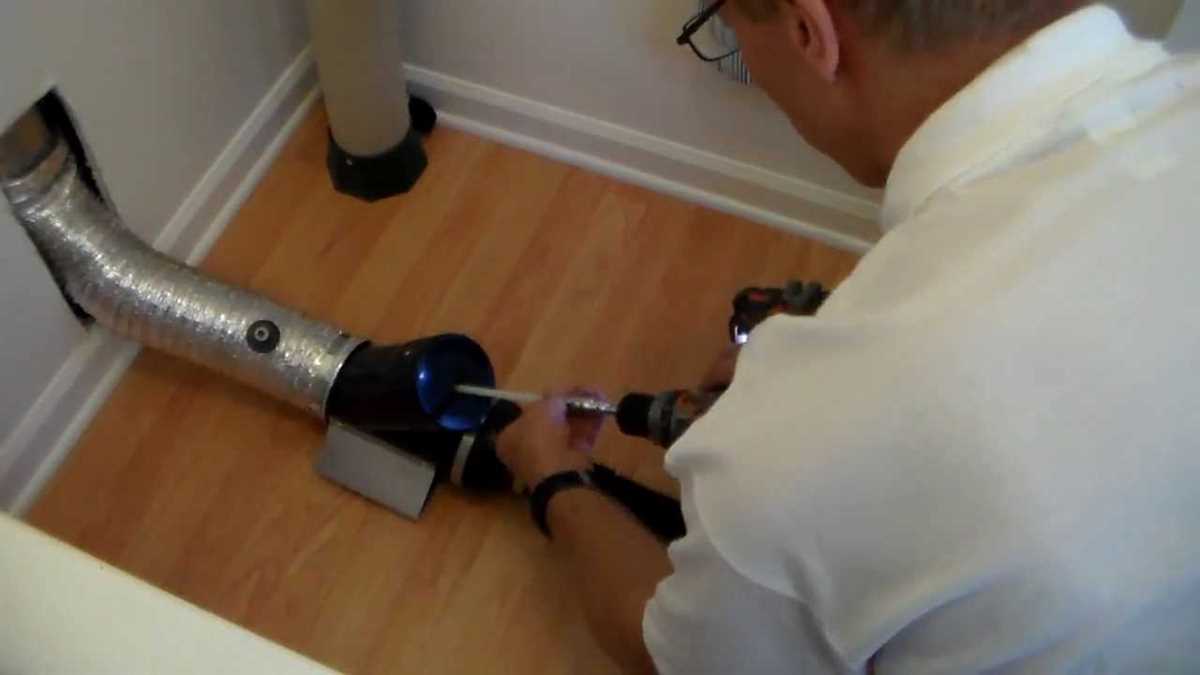
Go outside and locate the vent opening on the exterior wall where the dryer duct exits the house. It is typically a small metal or plastic cover.
4. Remove the vent cover
Use a screwdriver or wrench to remove the screws securing the vent cover in place. Once the screws are removed, carefully pull off the vent cover.
5. Attach the drill brush to the drill
Insert the drill brush attachment into your drill and make sure it is securely attached. This brush will help loosen and remove the lint from the dryer vent.
6. Insert the drill brush into the vent
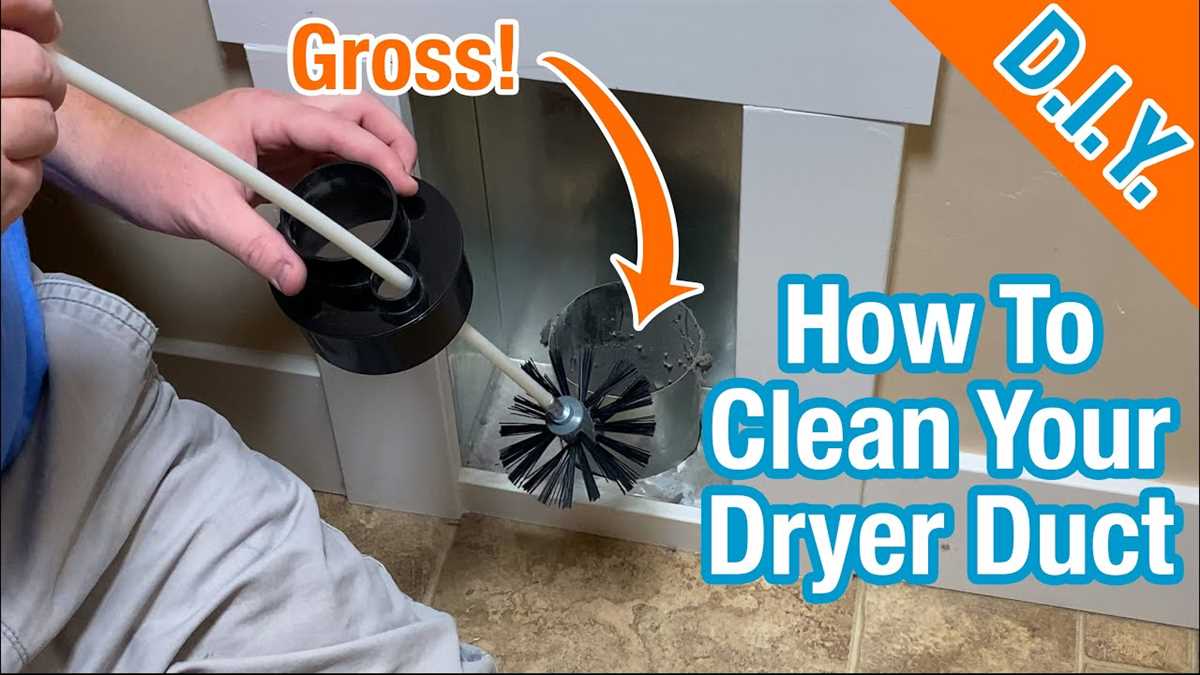
Insert the drill brush into the vent opening and carefully guide it through the duct. Use a slow and steady motion to ensure effective cleaning. Rotate the drill brush as you move it back and forth to dislodge the lint buildup.
7. Clean the vent opening
While the drill brush is still inside the vent, use a vacuum cleaner with a brush attachment to remove the loosened lint. This will prevent it from falling into the house or blocking the vent further down.
8. Repeat the process
Continue feeding the drill brush further into the vent and cleaning as you go. If necessary, attach an extension rod or a flexible dryer vent brush to reach deeper into the vent for a thorough clean. Keep repeating this process until you have cleaned the full length of the vent.
9. Inspect and reassemble
After completing the cleaning process, inspect the vent opening and make sure it is clear of any debris. Reattach the vent cover using the screws that were previously removed.
10. Test the dryer
Reconnect the dryer to the power source and run a test cycle to ensure proper airflow. Check for any signs of lint buildup or reduced airflow. If necessary, repeat the cleaning process or seek professional assistance.
Regularly cleaning your dryer vent from the outside using a drill can help maintain efficient performance and prevent potential fire hazards. Make sure to clean the vent at least once a year or more frequently if you notice any issues.
Tips for Cleaning a Dryer Vent Effectively
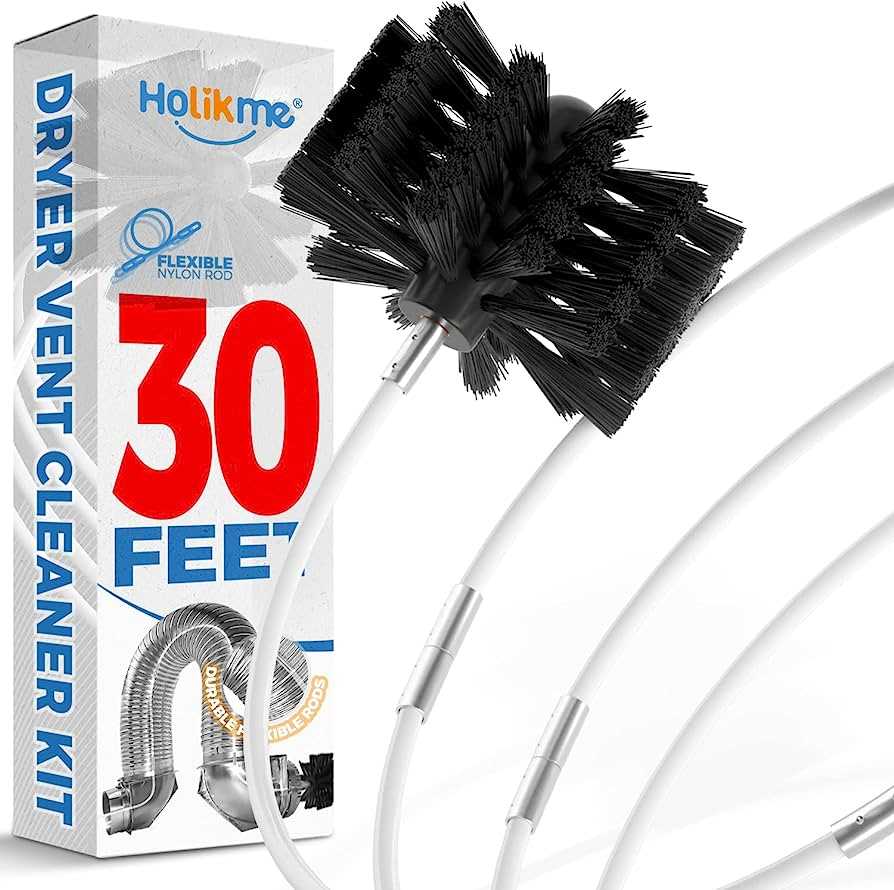
1. Disconnect the dryer
Before starting the cleaning process, make sure to disconnect the dryer from the power source. This eliminates any risk of electric shock or injury while cleaning the vent.
2. Remove the lint trap
Take out the lint trap from inside the dryer. Use a brush or your hands to remove any visible lint or debris from the trap. Make sure to clean both sides of the trap thoroughly.
3. Clean the lint trap housing
Using a vacuum cleaner or a brush attachment, clean the lint trap housing to remove any remaining lint or debris. It’s important to keep this area clean to ensure proper airflow and prevent clogs.
4. Use a dryer vent cleaning kit
Invest in a dryer vent cleaning kit, which typically includes a brush or rods that can be attached to a drill. This kit will help you clean the vent more effectively and efficiently.
5. Connect the cleaning kit to a drill
Attach the brush or rods from the cleaning kit to a drill. Make sure they are securely fastened and won’t come loose during the cleaning process.
6. Find the outside vent
Locate the outside vent for your dryer. This is usually a small flap or cover on an exterior wall. Remove any obstructions, such as leaves or debris, from the vent opening.
7. Begin the cleaning process
Insert the brush or rods into the outside vent opening. Use the drill to spin the brush or rods inside the vent, cleaning away the built-up lint and debris. Continue this process until the vent is clean.
8. Clean the vent pipe inside the house
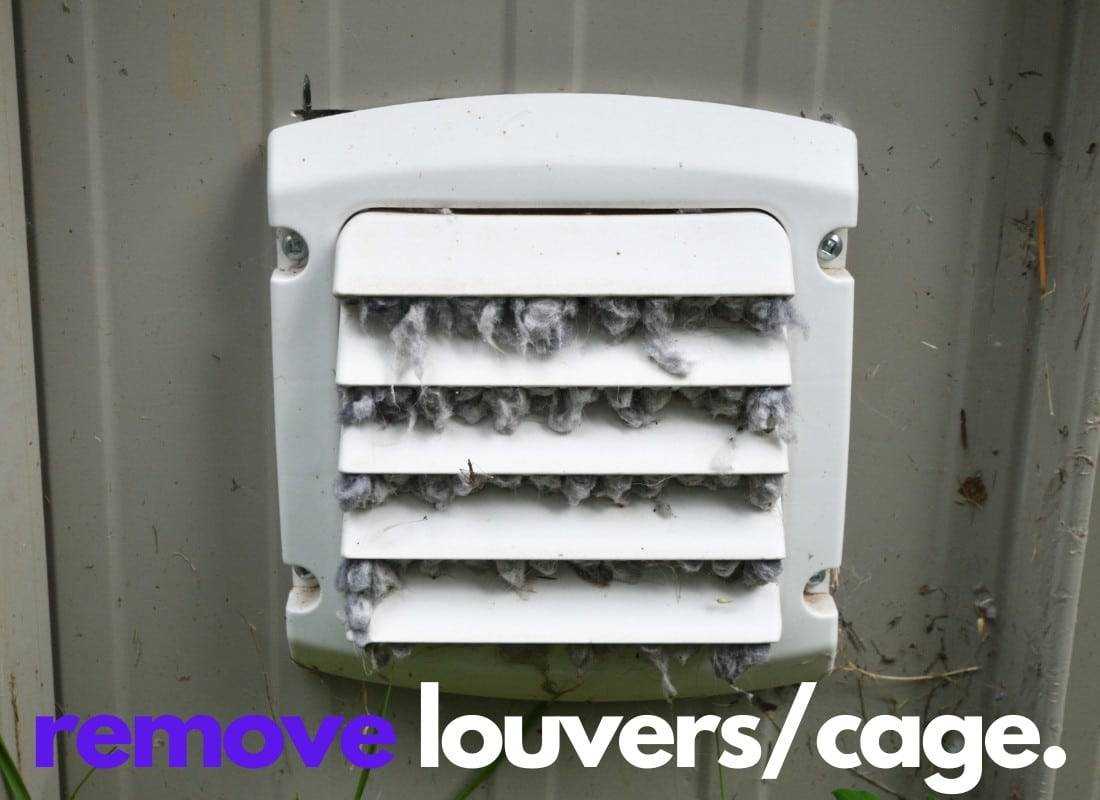
Once you have cleaned the vent from the outside, you should also clean the vent pipe inside the house. Disconnect the vent pipe from the dryer and use the brush or rods to clean out any remaining lint or debris.
9. Reconnect the dryer and test
After cleaning the vent and vent pipe, reconnect the dryer to the power source. Run a test cycle to ensure that the vent is properly cleaned and that the dryer is functioning correctly.
10. Regularly maintain and clean the vent
To prevent future clogs and ensure efficient drying, it’s important to regularly clean and maintain the dryer vent. Aim to clean the vent at least once a year, or more frequently if you notice any signs of a clog or reduced airflow.
By following these tips and regularly cleaning the dryer vent, you can prevent fire hazards, reduce energy consumption, and extend the lifespan of your dryer.
How Often Should You Clean Your Dryer Vent?
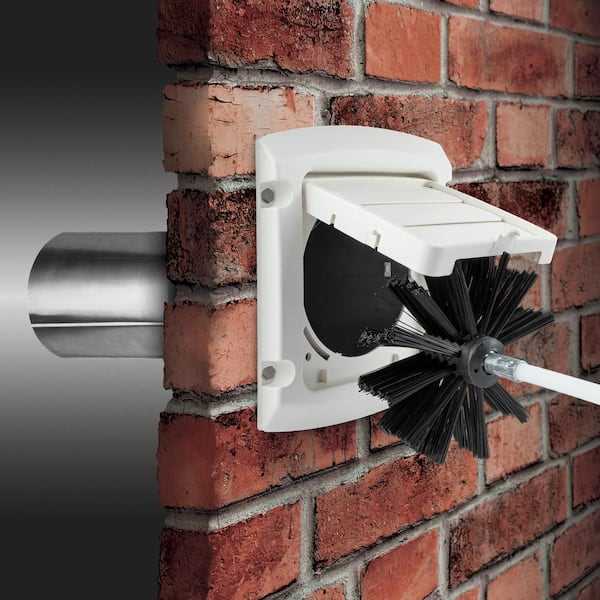
Regularly cleaning your dryer vent is an important maintenance task that can help prevent potential hazards and keep your dryer running efficiently. But how often should you clean your dryer vent?
The general recommendation
The general recommendation is to clean your dryer vent at least once a year. This will help remove lint buildup and ensure that your dryer operates at its optimal performance.
Factors to consider
However, the frequency of cleaning may vary depending on several factors:
- Usage: If you use your dryer frequently, such as several times a day or for large loads, you may need to clean the vent more often. Increased usage can lead to a faster buildup of lint and other debris.
- Vent length: The length of your dryer vent can also impact how often it needs to be cleaned. Longer vents tend to accumulate more lint and may need more frequent cleaning.
- Vent configuration: The configuration of your vent, such as any bends, twists, or turns, can also affect how often it needs cleaning. These areas can trap lint and debris, causing blockages and reducing airflow.
- External factors: If your dryer vent is located near trees, bushes, or other outdoor elements, it may be more susceptible to blockages from leaves, twigs, or other debris. In such cases, more frequent cleaning may be necessary.
Signs it’s time to clean your dryer vent
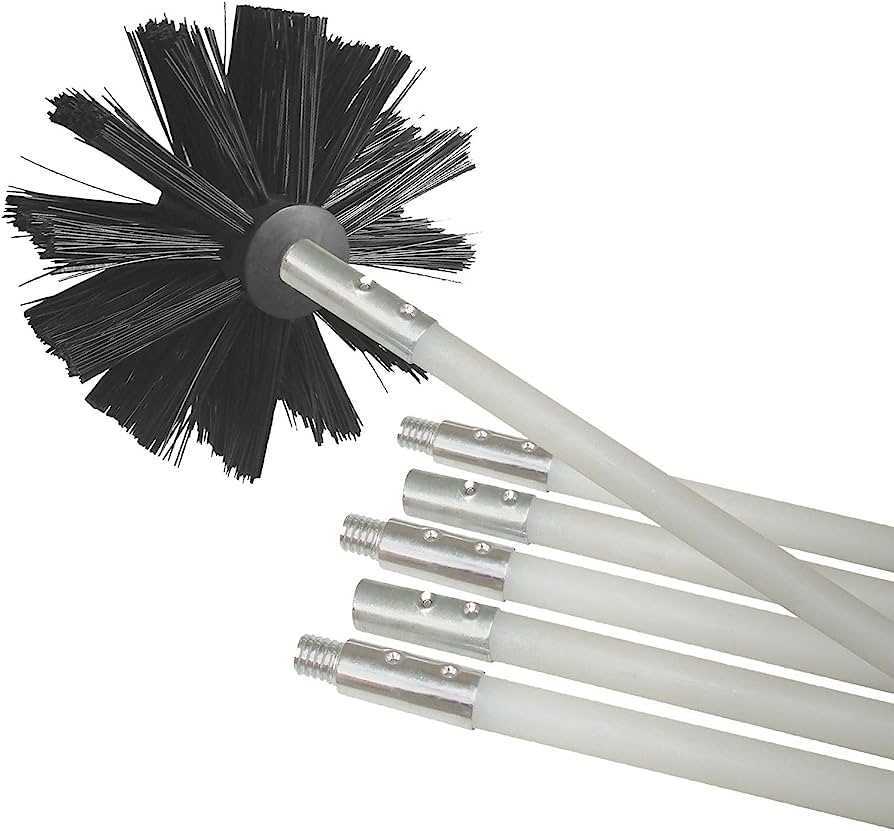
In addition to the recommended regular cleaning, there are some signs that indicate it’s time to clean your dryer vent:
- Drying time: If your clothes are taking longer than usual to dry, it could be a sign of a clogged dryer vent. Reduced airflow due to lint buildup can prolong drying time.
- Excessive heat: If your dryer is generating an excessive amount of heat during operation, it may be a result of a blocked vent. This can be a fire hazard and should be addressed promptly.
- Lint accumulation: If you notice an excessive accumulation of lint around your dryer or on the lint screen, it’s a clear sign that your vent needs cleaning. Lint buildup can restrict airflow and increase the risk of a dryer fire.
- Burning smell: A burning smell coming from your dryer could indicate a clogged vent. This should be investigated immediately, as it poses a serious fire hazard.
Conclusion
In conclusion, it is recommended to clean your dryer vent at least once a year. However, factors such as usage, vent length and configuration, and external factors may influence the frequency of cleaning. It’s important to pay attention to signs that indicate a clogged or blocked vent and take action promptly to prevent potential hazards.
Benefits of Regular Dryer Vent Cleaning
- Prevent Fire Hazards: One of the most significant benefits of regular dryer vent cleaning is that it helps to prevent fire hazards. Over time, lint, dust, and debris can accumulate in the dryer vent, which can easily catch fire if it comes into contact with a heat source. Regular cleaning helps to remove these flammable materials, reducing the risk of a dryer vent fire.
- Reduce Drying Time: When the dryer vent is clogged or obstructed, it restricts the airflow, causing the dryer to work harder and longer to dry the clothes. Regular cleaning helps to improve the ventilation, allowing the hot air to escape more efficiently. This results in shorter drying times and increased energy efficiency.
- Extend the Lifespan of the Dryer: A clogged dryer vent can cause the dryer to overheat, leading to potential damage to the heating element, thermostat, and other components. By cleaning the dryer vent regularly, you can prevent excessive heat buildup and extend the lifespan of your dryer.
- Prevent Mold and Mildew Growth: A clogged dryer vent can create a humid environment inside the dryer, providing the perfect conditions for mold and mildew growth. Regular cleaning helps to remove moisture and prevent the buildup of mold and mildew, keeping your dryer and laundry area clean and safe.
- Improve Air Quality: When the dryer vent is clogged, it can cause lint and other debris to be released into the air in your home. This can potentially worsen indoor air quality and trigger allergies or respiratory problems. Regular cleaning helps to remove these particles, improving the air quality in your home.
- Save Money on Energy Bills: A clogged dryer vent not only increases drying time but also decreases the efficiency of your dryer. When your dryer has to work harder to dry the clothes, it consumes more energy, leading to higher energy bills. By keeping your dryer vent clean, you can save money on energy costs.
Regular dryer vent cleaning is essential for maintaining the safety, efficiency, and longevity of your dryer. By investing a little time and effort into regular maintenance, you can enjoy the benefits of a safer and more efficient dryer, while also saving money on energy bills in the long run.
FAQ:
Why is it important to clean the dryer vent?
It is important to clean the dryer vent because it can become clogged with lint and other debris over time, which can lead to reduced airflow and increased risk of fire. Regular cleaning of the vent can help prevent these issues and ensure that your dryer is working efficiently.
How often should I clean my dryer vent?
The frequency of cleaning your dryer vent depends on several factors, such as the length of the vent and how often you use your dryer. It is generally recommended to clean the vent at least once a year. However, if you notice any signs of reduced airflow or if your clothes are taking longer to dry, it may be necessary to clean the vent more frequently.
Can I clean the dryer vent from outside using a drill?
Yes, you can clean the dryer vent from outside using a drill. This method involves attaching a dryer vent cleaning brush to a drill and inserting it into the vent opening. By rotating the brush with the drill, you can dislodge and remove any lint or debris that may be blocking the vent.
Video:

